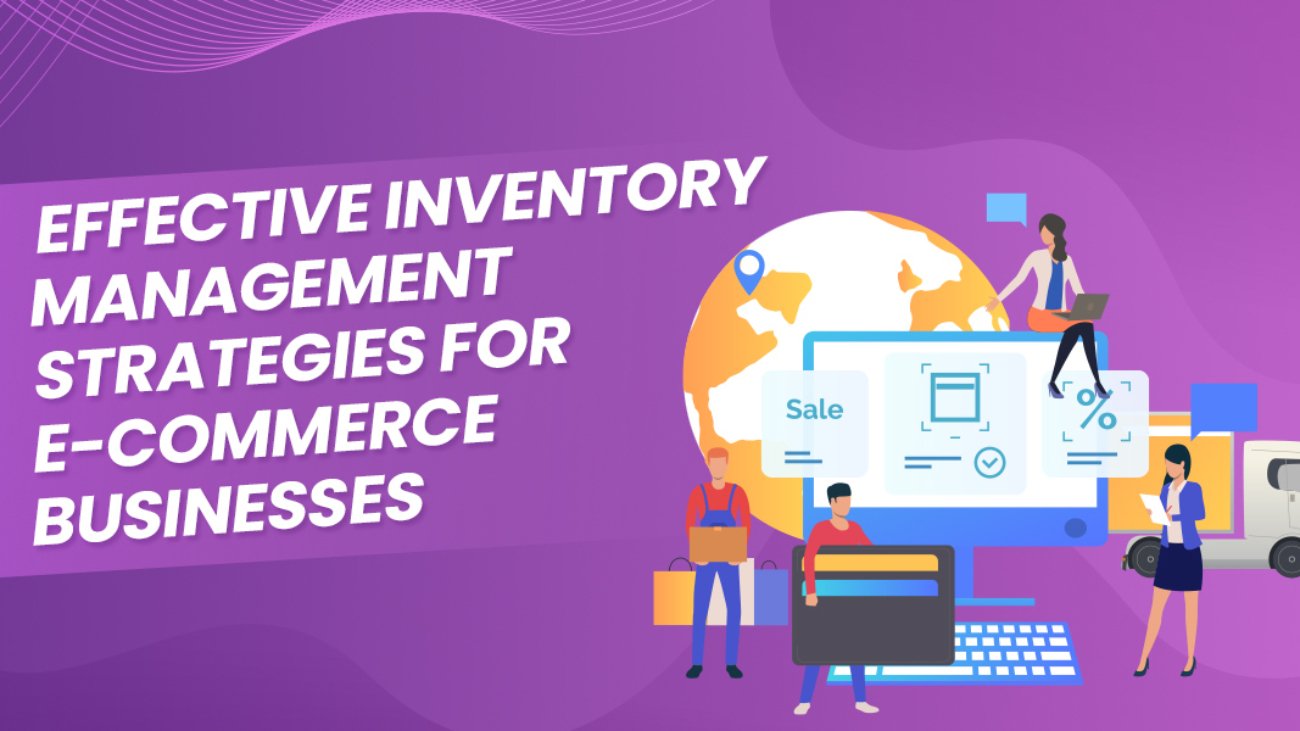Effective Inventory Management Strategies for E-commerce Businesses
Effective inventory management is crucial for the success of any e-commerce business. With the right strategies, businesses can ensure they have the right products available at the right time, minimise costs, and provide excellent customer service. This blog explores key inventory management strategies tailored for e-commerce businesses, especially those utilising a free ecommerce website UK platform.
Understanding the Basics of Inventory Management
Before diving into specific strategies, it’s essential to understand what inventory management entails. Inventory management involves overseeing the flow of goods from manufacturers to warehouses and from these facilities to the point of sale. It includes tracking inventory levels, ordering stock, and ensuring that products are stored efficiently.
Key Objectives of Inventory Management
- Avoid Stockouts and Overstocking: Striking a balance between having too much and too little inventory.
- Optimise Storage Costs: Efficiently utilising storage space to minimise costs.
- Improve Cash Flow: Ensuring that money isn’t tied up in excess stock.
- Enhance Customer Satisfaction: Providing products when customers need them.
Implementing Effective Inventory Management Strategies
Here are some strategies to help e-commerce businesses manage their inventory effectively.
- Utilise Inventory Management Software
Investing in robust inventory management software is one of the best steps an e-commerce business can take. These tools help automate the tracking process, provide real-time inventory levels, and generate reports that aid decision-making.
Benefits of Inventory Management Software
- Real-time Tracking: Always know what’s in stock.
- Automated Reordering: Set thresholds for automatic reordering.
- Data Analytics: Gain insights into sales trends and inventory turnover.
- Adopt the Just-In-Time (JIT) Inventory System
The Just-In-Time inventory system aims to minimise inventory by ordering stock only when it’s needed. This approach reduces storage costs and minimises waste.
Advantages of JIT
- Cost Savings: Lower storage and holding costs.
- Reduced Waste: Minimise the risk of products becoming obsolete.
- Flexibility: Ability to respond quickly to market changes.
- Conduct Regular Inventory Audits
Regular inventory audits help ensure the accuracy of your inventory records. There are different types of audits you can perform, such as physical counts, cycle counts, and spot checks.
Types of Inventory Audits
- Physical Counts: A complete count of all inventory items.
- Cycle Counts: Counting a subset of inventory on a rotating schedule.
- Spot Checks: Random checks of specific items.
- Implement ABC Analysis
ABC analysis is a method of categorising inventory into three categories (A, B, and C) based on their importance. ‘A’ items are the most valuable, ‘B’ items are moderately important, and ‘C’ items are the least important.
Benefits of ABC Analysis
Focused Management: Prioritise management efforts on high-value items.
Resource Allocation: Allocate resources based on the importance of items.
Improved Efficiency: Streamline inventory processes.
- Use Dropshipping
Dropshipping is a retail fulfilment method where a store doesn’t keep the products it sells in stock. Instead, the store purchases the item from a third party and has it shipped directly to the customer.
Advantages of Dropshipping
- Reduced Overhead: No need to manage physical inventory.
- Flexibility: Easily add new products without worrying about storage.
- Lower Risk: Less capital required to start and run the business.
- Forecast Demand Accurately
Accurate demand forecasting is essential for maintaining the right inventory levels. Use historical data, market trends, and seasonal fluctuations to predict future demand.
Methods of Demand Forecasting
- Quantitative Methods: Use historical sales data and statistical models.
- Qualitative Methods: Leverage market research and expert opinions.
- Hybrid Methods: Combine both quantitative and qualitative approaches.
- Optimise Your Warehouse Layout
An efficient warehouse layout can significantly impact inventory management. Organise your warehouse to minimise the time and effort required to pick and pack orders.
Tips for Warehouse Optimization
- Categorise Inventory: Group similar items together.
- Use Vertical Space: Maximise storage by using shelves and racks.
- Implement a Picking System: Use batch picking, wave picking, or zone picking to streamline the process.
- Leverage Technology for Inventory Tracking
RFID (Radio Frequency Identification) and barcode technology can greatly enhance inventory tracking accuracy and efficiency.
Benefits of RFID and Barcode Technology
- Improved Accuracy: Reduce human error in tracking inventory.
- Real-time Updates: Get instant updates on inventory levels.
- Enhanced Efficiency: Speed up the picking and packing process.
- Partner with Reliable Suppliers
Building strong relationships with reliable suppliers ensures you receive quality products on time, which is critical for maintaining consistent inventory levels.
Key Considerations When Choosing Suppliers
- Reliability: Consistent delivery times and product quality.
- Communication: Easy and clear communication channels.
- Flexibility: Ability to handle fluctuations in demand.
- Monitor Inventory Performance Metrics
Track key inventory performance metrics to identify areas for improvement and make informed decisions.
Important Inventory Metrics
- Inventory Turnover Ratio: Measures how often inventory is sold and replaced over a period.
- Stockouts: Frequency of running out of stock.
- Order Fulfilment Time: Time taken to fulfil an order from receipt to delivery.
- Holding Costs: Costs associated with storing unsold inventory.
Conclusion
Effective inventory management is a cornerstone of success for e-commerce businesses. By utilising inventory management software, adopting JIT systems, conducting regular audits, and leveraging technology, businesses can streamline their operations and enhance customer satisfaction. Furthermore, accurate demand forecasting, warehouse optimization, and strong supplier relationships play a critical role in maintaining optimal inventory levels.
For e-commerce businesses operating on a free ecommerce website UK platform, implementing these strategies can help manage inventory more effectively, reduce costs, and ensure that customers receive their orders promptly. By continuously monitoring and refining inventory management practices, businesses can stay competitive and responsive in a dynamic market environment.
Inventory management is not a one-time task but an ongoing process that requires attention to detail and a proactive approach. With the right strategies in place, e-commerce businesses can achieve greater efficiency, better cash flow, and higher customer satisfaction, ultimately leading to sustained growth and success.


